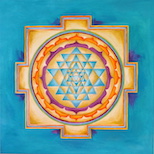PRACTICE OF MEDITATION
Practice of meditation is an activity of mind and body that was known to ancient people.
While in the practice of concentration (dharana), one’s sense of time and space is still present, in meditation one is fully merged with the inner world. The sense of time and space is a transcendent experience, where transcendent experience refers to an experience that is far from any experience of a material nature (thoughts are also matter).
In meditation, the thoughts of the self as well as the consciousness of the body are transcendent (videha). One becomes an observer. The mind (subject) is united with the object. In this melted state the mind discovers something that it did not know before.
Such a discovery will then be transmitted to daily life. In fact, meditation is not a state in itself but rather a person is absorbed in meditation.
Meditation is a very active absorption and complete inner clarity where consciousness flows spontaneously and freely. Creativity flows free from any judgment. In the state of meditation one receives the cosmic energy that flows through the energy or the etheric body.
The etheric body is, according to ancient Yoga science, pervaded with 72 thousand energy channels called nadis which are the link between the maha akasha (maha – big, akasha – space, cosmos) and the body. In complete silence, cosmic energy flows through the nadis purifying and removing the blockages in them.
Conscious yogic breathing at the beginning of practice works in the same way.
Both high-level pranayama and meditation are the most direct way of separating the finest part of the soul from the grossest limitations of mind and body. Other external means such as prayer are a more indirect way (though this state of consciousness, spirit, mind and body and their transformation, in rare cases can happen to a genuinely religious person who is able to distinguish begging from prayer).
With each devotional and correct meditation, man digs deep hidden pits in his body, spirit and intellect towards his true Self while approaching higher knowledge.
In order to bring meditation to these most exalted human cognition, it is always helpful to meditate in the same way and in the same direction.




